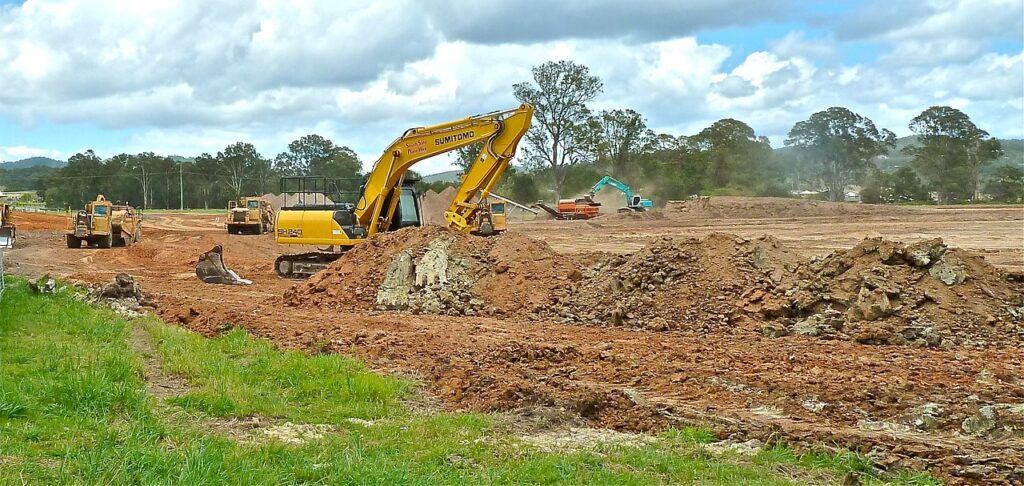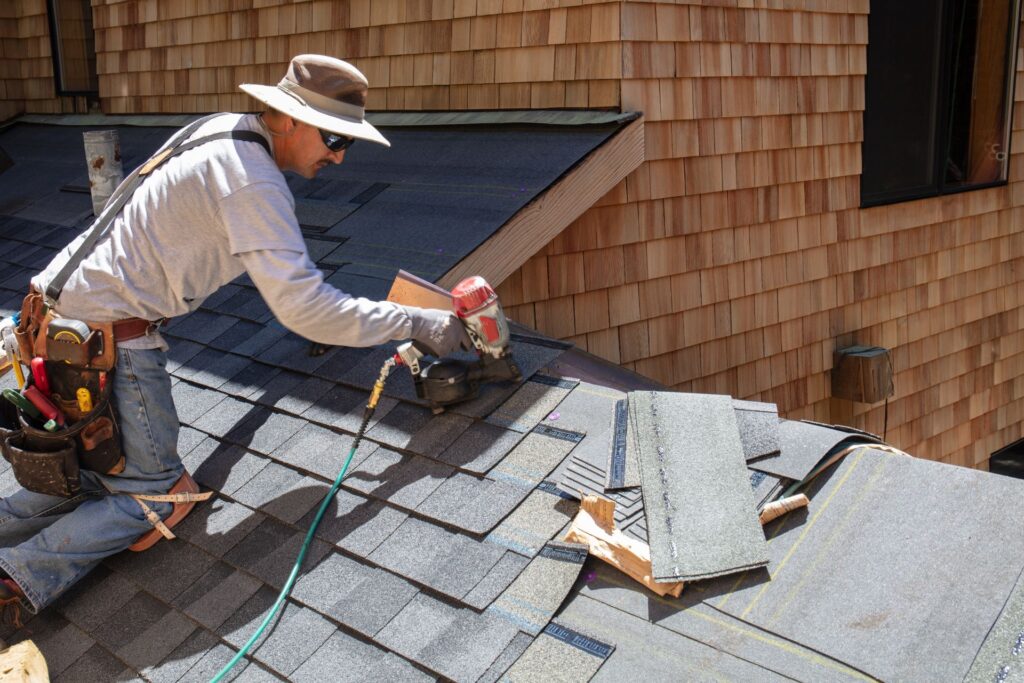Welcome to our comprehensive guide on builder charge-up rates in New Zealand. If you’re planning a building or renovation project, understanding these rates is crucial for budgeting and negotiating with contractors. Charge-up rates, or time and materials rates, differ from fixed-rate contracts and can significantly impact the overall cost of your project. In this post, we’ll delve into how these rates are determined, the various factors that influence them, and provide essential tips for getting the most accurate estimates from your builder. Whether you’re a first-time homeowner or a seasoned developer, this guide will equip you with the knowledge you need to navigate the complexities of builder charge-up rates effectively.
Builder charge-up rates in New Zealand typically range from NZ$45 to NZ$100 per hour, depending on factors like location, expertise of the builders, and complexity of the project. Charge-up rates, also known as time and materials rates, allow for flexibility in managing changes and unforeseen conditions during construction. These rates include direct labor costs and materials, making it essential for project planners and homeowners to have a clear understanding to effectively budget and negotiate contracts.
- What Are Builder Charge-Up Rates?
- Factors Influencing Builder Charge-Up Rates In New Zealand
- Average Builder Charge-Up Rates In NZ
- How To Get An Accurate Estimate From Your Builder
- Negotiating Builder Charge-Up Rates
- Understanding Your Quote
- Managing Costs During The Building Process
- Case Studies
- FAQs: About Builder Charge Up Rates NZ
- Conclusion
- Find A Professional Builders Near You!
What Are Builder Charge-Up Rates?
When you embark on a construction or renovation project, understanding the financial and billing aspects is crucial. Among the various pricing models, builder charge-up rates, also known as time and materials (T&M) rates, are a common approach that merits detailed exploration.
Understanding Charge-Up Rates
Charge-up rates, or time and materials rates, are a method of billing that involves charging clients based on the actual time spent on a project, coupled with the cost of materials used. This pricing model offers flexibility and transparency, making it an appealing choice for projects where the scope is not clearly defined from the outset. Builders track their labor hours and the materials consumed, then bill these costs directly to the client along with a markup for overhead and profit.
Structure of Charge-Up Rates in the Building Industry
In the building industry, charge-up rates are typically structured around several key components:
1. Labor Costs: This includes the wages paid to workers directly engaged in the construction activities. It often varies depending on the skill level and the complexity of tasks performed.
2. Materials Costs: All expenses related to the materials required for the construction are billed back to the client. This component can fluctuate based on market prices for materials like lumber, steel, and concrete.
3. Equipment Use: If specific machinery or tools are necessary for a project, the cost of renting or using this equipment can also be included in the charge-up rates.
4. Overheads: General administrative costs, site management, and other indirect expenses are factored into the overall billing.
5. Profit Margin: Finally, a predetermined profit margin is added on top of the labor, materials, and overhead costs to ensure the financial viability of the contractor.
Charge-Up Rates vs. Fixed-Rate Contracts
Comparatively, charge-up rates differ significantly from fixed-rate contracts. A fixed-rate contract, as the name suggests, involves agreeing on a set price for the entire project before work commences. This type of contract provides clients with financial certainty as the total cost is known upfront, making budgeting simpler and more predictable.
However, fixed-rate contracts might not always be feasible or cost-effective when the project scope is ambiguous or likely to change. In such cases, charge-up rates provide the flexibility to adjust the workload and materials without renegotiating the overall project cost continually.
Choosing between charge-up rates and fixed-rate contracts depends largely on the project’s specifics, the level of predictability, and the risk appetite of both the builder and the client. Charge-up rates offer transparency and adaptability, particularly suited for customized projects where changes and modifications are anticipated. Understanding these nuances will empower you to make informed decisions that align with your project goals and budget considerations.
By understanding and leveraging this detailed insight into builder charge-up rates, stakeholders can navigate the complexities of construction finance with confidence, ensuring that every decision is both informed and strategic.
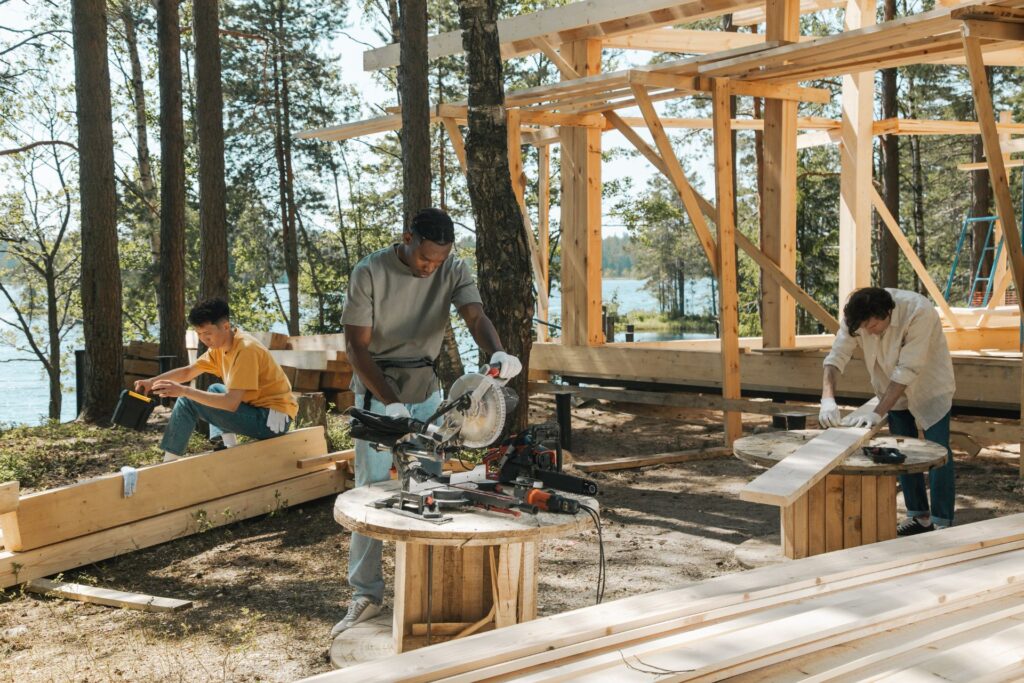
Factors Influencing Builder Charge-Up Rates In New Zealand
When it comes to understanding builder charge-up rates in New Zealand, several critical factors come into play. These factors can significantly impact the overall cost of a construction project, and it’s essential to consider each one carefully.
Labor Costs
One of the primary components influencing builder charge-up rates is labor costs. These costs are not just limited to the basic hourly wages of the workers; they encompass a range of expenses that contribute to the overall labor cost.
1. Wages: The most direct expense is the hourly wage paid to the builders. In New Zealand, these wages can vary depending on the skill level, experience, and specialization of the workers involved. For instance, a highly skilled carpenter may command a higher hourly rate than an apprentice or general laborer.
2. Benefits: In addition to wages, employers often provide benefits such as health insurance, retirement contributions, and paid leave. These benefits are crucial in attracting and retaining skilled workers but also add to the overall labour cost.
3. Overtime: Overtime pay can also drive up labor costs. In situations where projects need to be completed within tight deadlines, builders may work extra hours, which typically come at a higher pay rate. This can significantly increase the total cost of labor on a project.
Materials Costs
Another significant factor influencing builder charge-up rates is the cost of materials. The price of construction materials can fluctuate due to various reasons, and these changes can directly impact the overall cost of a building project.
1. Price Variability: Material costs are subject to variability based on factors such as supply chain issues, international trade policies, and availability of raw materials. For example, a sudden shortage of timber or steel can lead to a sharp increase in prices, which builders need to factor into their charge-up rates.
2. Quality of Materials: The quality of materials chosen for a project also plays a role in determining costs. Higher-quality materials often come at a premium, but they can offer better durability and aesthetics, which might be desirable depending on the project’s requirements.
3. Waste and Efficiency: How efficiently materials are used on a project can also affect costs. Builders who can minimize waste through careful planning and precise execution can help keep material costs down, but inefficient use of materials can lead to increased expenses.
Location
Geographical location is another key factor that influences builder charge-up rates in New Zealand. Whether a project is located in an urban or rural area can have a significant impact on costs.
1. Urban vs. Rural Areas: Building in urban areas often comes with higher costs due to the increased demand for space, higher wages, and the potential for logistical challenges like limited access to the site. On the other hand, rural areas might have lower labour costs, but they can also involve higher transportation costs for materials and potentially fewer local suppliers.
2. Regional Variations: Different regions in New Zealand may have varying levels of demand for construction services, which can affect rates. For example, regions experiencing a construction boom may see higher charge-up rates due to the increased demand for builders.
3. Access to Resources: The proximity of the construction site to suppliers and resources also plays a role. Projects located far from major suppliers may incur additional transportation costs, which can drive up the overall charge-up rates.
Market Demand
Finally, the local economic climate and market demand for construction services can heavily influence builder charge-up rates.
1. Economic Climate: In a strong economy with robust construction activity, demand for builders may outpace supply, leading to higher rates. Conversely, in an economic downturn, rates may be more competitive as builders seek to secure available work.
2. Construction Demand: The level of ongoing construction projects in a region directly impacts rates. High demand can lead to increased rates due to the scarcity of available builders, while lower demand may see more competitive pricing.
3. Seasonal Variations: Certain times of the year may see fluctuations in construction demand, affecting rates. For instance, during peak building seasons, rates may rise as builders become busier, while off-peak seasons might offer more competitive pricing.
Understanding these factors is crucial for anyone planning a construction project in New Zealand. By considering labor and materials costs, location-specific factors, and market demand, you can better estimate potential expenses and plan your budget accordingly.

Average Builder Charge-Up Rates In NZ
When it comes to understanding builder charge-up rates in New Zealand, it’s important to consider several factors that influence pricing across the country. Whether you’re planning a small renovation or a large-scale construction project, having insight into these rates helps ensure you’re prepared for the costs involved. Below, we’ll explore the current average rates across major regions like Auckland, Wellington, and Christchurch, highlight recent trends in pricing, and examine how global events have impacted local building costs.
Current Average Builder Charge-Up Rates Across Major Regions
Builder charge-up rates in New Zealand vary depending on location, the complexity of the job, and the experience of the builder. Here’s a breakdown of average rates in key regions:
- Auckland: Builders in Auckland typically charge between $75 to $120 per hour. Given Auckland’s higher cost of living and the region’s housing demand, it’s no surprise that rates here sit at the higher end of the spectrum.
- Wellington: In Wellington, rates generally range from $70 to $110 per hour. While the capital city is slightly more affordable than Auckland, there’s still strong competition for skilled builders, which keeps rates competitive.
- Christchurch: Following the earthquakes, Christchurch has seen a significant amount of rebuilding, which has influenced the local market. Here, you can expect to pay between $65 to $100 per hour, reflecting both the ongoing demand and the region’s efforts to stabilize after extensive reconstruction.
Trends in Builder Charge-Up Rates Over Recent Years
Over the last few years, builder charge-up rates in New Zealand have seen a consistent upward trend. Several factors contribute to this increase:
- Supply and Demand: The ongoing housing crisis, particularly in Auckland, has driven up demand for skilled labor, which naturally pushes rates higher. The more in-demand the builders, the more they can charge for their services.
- Inflation: Like many other sectors, the building industry has not been immune to inflation. The rising cost of materials, transportation, and general living expenses has meant that builders need to charge more to maintain their margins.
- Skill Shortage: There’s a well-documented shortage of qualified builders in New Zealand. This scarcity has been exacerbated by fewer immigrants entering the country due to tighter border controls, leading to higher rates as builders become a scarce resource.
Impact of Global Events on Local Building Costs
Global events, such as the COVID-19 pandemic and economic downturns, have had significant effects on the building industry in New Zealand. These events have caused disruptions in the supply chain, resulting in increased material costs and longer project timelines, which directly affect charge-up rates.
- COVID-19 Pandemic: The pandemic led to widespread disruptions in the supply chain, with delays in the availability of key materials like timber, steel, and concrete. As a result, builders faced higher material costs, which were passed on to clients. Additionally, the initial lockdowns caused project delays, which further increased costs due to extended labor hours.
- Economic Crises: Global economic uncertainty often leads to fluctuating currency values, which can make imported materials more expensive. For a country like New Zealand, which imports a significant amount of building materials, this has a direct impact on the cost of construction projects.
In summary, while New Zealand’s builder charge-up rates vary by region, recent years have seen a steady increase due to rising demand, inflation, and global events. For homeowners and developers, understanding these factors is crucial for budgeting and planning any construction work. Whether you’re building in Auckland, Wellington, or Christchurch, being informed about current rates and trends will help you make smarter decisions when hiring a builder.

How To Get An Accurate Estimate From Your Builder
When embarking on a construction project, securing an accurate estimate from your builder is crucial to avoid unexpected costs and ensure the project runs smoothly. Here’s a comprehensive guide on how to achieve that.
Tips on What Information You Should Provide to Get a Precise Estimate
The accuracy of your builder’s estimate depends largely on the details you provide upfront. To start, give a clear outline of the project’s scope. Specify the type of work needed, the materials you prefer, and any specific features or finishes you desire. For example, if you’re building an extension, note down the square footage, the number of rooms, and any bespoke elements like custom windows or built-in storage. The more precise you are, the easier it is for your builder to calculate costs, including labor and materials, without leaving room for guesswork.
Additionally, share any relevant site plans, architectural drawings, or engineering reports you have. These documents offer your builder a detailed view of the project, eliminating ambiguities that could lead to cost overruns.
The Importance of Detailed Project Specifications
Detailed project specifications act as the backbone of an accurate estimate. They ensure both you and your builder are on the same page regarding expectations. Without these, your builder might make assumptions that don’t align with your vision, leading to potential disputes or unexpected costs down the line.
For instance, when specifying materials, don’t just mention “hardwood flooring” but include the type of wood, finish, and even the pattern if relevant. Such specifics not only help in pricing but also in sourcing the right materials from the start, preventing delays.
Moreover, detailed specifications allow for a more accurate timeline. When your builder knows exactly what needs to be done, they can plan accordingly, reducing the likelihood of time and cost overruns.
The Role of Consultations and Site Visits in Determining Accurate Rates
While detailed information is essential, consultations and site visits are equally important for accuracy. During a site visit, the builder can assess the condition of the property, identify any potential challenges, and gauge the project’s complexity. For example, if your project involves renovating an older building, the builder might discover structural issues or outdated systems that need addressing, which could affect the overall estimate.
Consultations provide an opportunity for you to discuss your ideas and preferences in depth. They also allow your builder to ask questions, clarify any uncertainties, and suggest cost-saving alternatives that you may not have considered. This collaborative approach not only fosters transparency but also helps in setting realistic expectations for both parties.
In conclusion, getting an accurate estimate from your builder hinges on providing detailed information, having well-defined project specifications, and allowing for thorough consultations and site visits. These steps ensure that your builder has all the necessary information to deliver a reliable quote, helping you avoid surprises and keep your project on track.
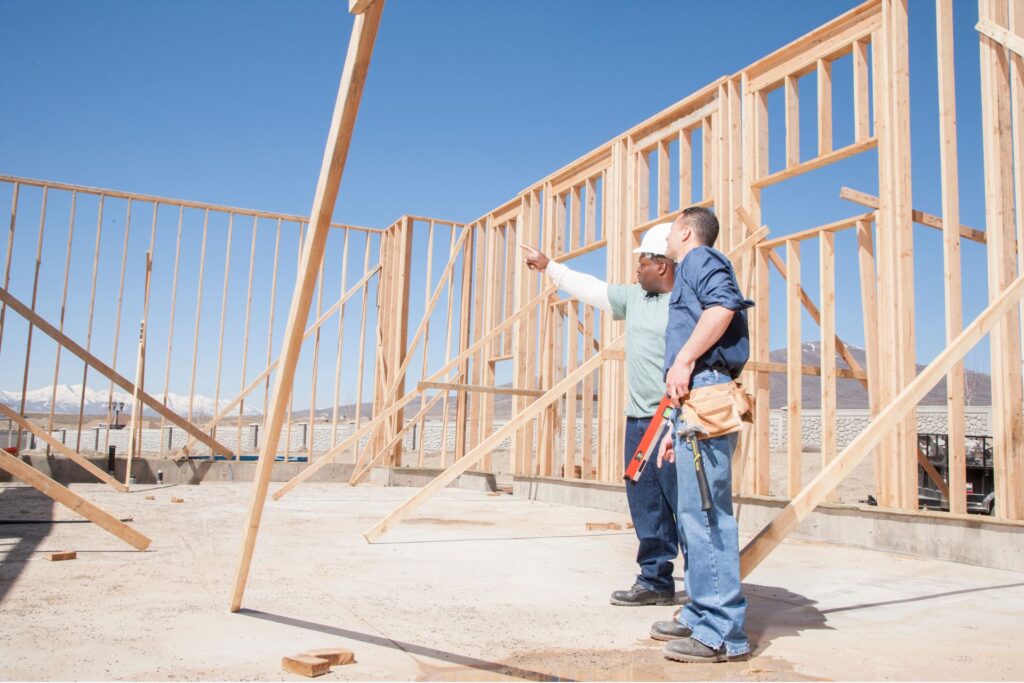
Negotiating Builder Charge-Up Rates
When you’re embarking on a construction project, one of the most critical aspects to manage is the cost. Builder charge-up rates, which cover labor, materials, and overheads, can significantly impact your budget. However, negotiating these rates doesn’t have to mean sacrificing quality. Here’s how you can navigate this process effectively:
1. Strategies to Negotiate Better Rates Without Compromising on Quality
Negotiating builder rates can be a delicate balance between securing a fair price and maintaining high standards. Start by doing your homework. Understand the market rates for similar projects in your area. Being informed gives you a strong foundation for negotiation. When you approach a builder, communicate clearly about your budget constraints while emphasizing that quality remains a top priority. Sometimes, builders are willing to offer a discount if you can provide them with ongoing work or referrals. Building a good relationship can lead to long-term benefits and even better deals in the future.
Another strategy is to discuss the scope of the work in detail. Sometimes, small adjustments in the project timeline or materials can lead to significant savings without compromising on quality. For instance, opting for locally sourced materials might reduce costs while still meeting your standards.
2. The Importance of Obtaining Multiple Quotes
One of the golden rules in negotiating builder charge-up rates is to obtain multiple quotes. This is not just about finding the lowest price but understanding what different builders offer for their rates. When you have several quotes, you can compare them based on the scope of work, materials, timeline, and the builder’s reputation.
Multiple quotes also give you leverage in negotiations. If one builder knows you’re considering other options, they might be more willing to adjust their rates to win your business. However, remember that the cheapest quote isn’t always the best. Pay attention to what each quote includes—some builders might cut corners or exclude critical aspects of the project to offer a lower price.
3. When to Negotiate vs. When to Accept Standard Rates
Knowing when to negotiate and when to accept standard rates is crucial. If a builder has a strong reputation, a solid portfolio, and positive reviews, their rates might reflect their expertise and reliability. In such cases, pushing too hard on price might not be wise, as it could lead to a compromise in quality or even cause the builder to walk away from the project.
On the other hand, if a quote seems excessively high compared to others, or if the builder is relatively new, there might be room for negotiation. Start by asking for a detailed breakdown of the costs. This can highlight areas where adjustments can be made. For example, if labor costs are high, you could suggest a different schedule or a phased approach to reduce the immediate financial burden.
Ultimately, the decision to negotiate or accept standard rates should be guided by your project’s specific needs, the builder’s experience, and the value they bring to the table. Sometimes, paying a bit more upfront can save you money in the long run by avoiding costly mistakes or delays.
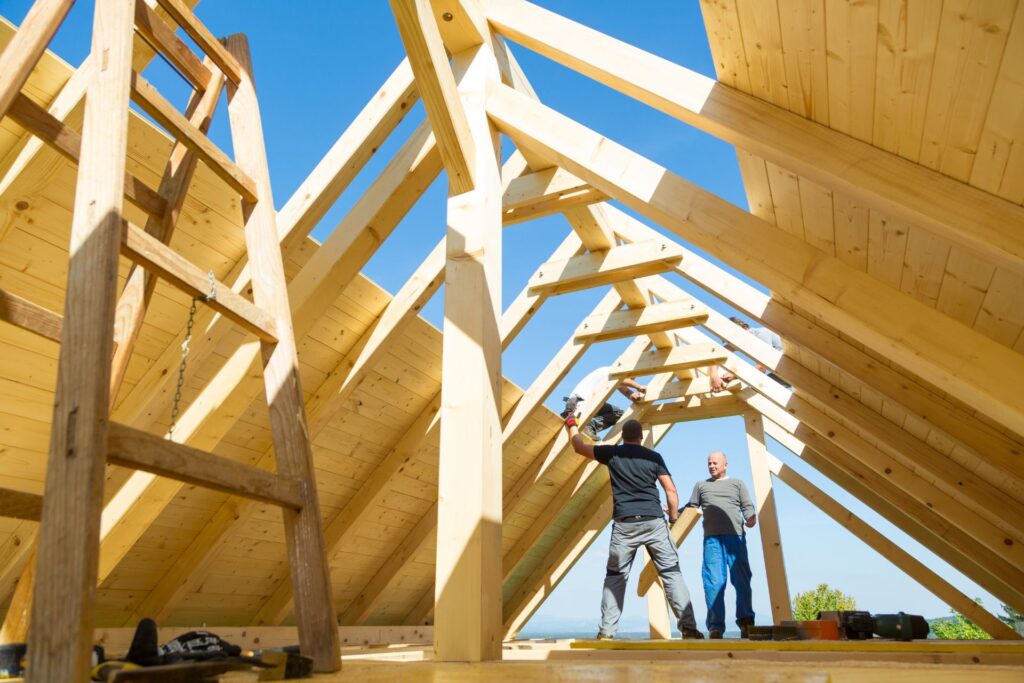
Understanding Your Quote
When you receive a builder’s quote, it can feel like you’re deciphering a different language. Between the technical jargon, varying fees, and the legalese of terms and conditions, it’s easy to get overwhelmed. However, understanding your builder’s quote is crucial to ensuring your project runs smoothly and stays within budget. In this section, we’ll break down a typical quote, explain the common terms, and offer tips to help you avoid common pitfalls.
Breaking Down a Sample Builder’s Quote
A builder’s quote is more than just a price tag—it’s a detailed breakdown of the costs involved in your project. Here are some key components you’re likely to encounter:
1. Labor Costs: This is the cost of the work performed by the builders, carpenters, electricians, plumbers, and other tradespeople. It’s typically calculated by the hour or as a fixed fee for the entire project.
2. Material Costs: This includes the cost of all the materials needed for the project, such as lumber, nails, paint, and fittings. Prices can vary based on quality, brand, and supply chain factors.
3. Project Management Fees: Many builders will charge a fee for managing the project. This covers the coordination of different trades, scheduling, and ensuring everything runs on time.
4. Contingency Fund: This is an often-overlooked but essential part of a quote. A contingency fund is a buffer amount set aside to cover unexpected costs, such as unforeseen structural issues or material shortages.
5. Permits and Inspections: Depending on your location, your project might require permits and inspections from local authorities. These fees are usually passed on to you by the builder.
6. GST (Goods and Services Tax): In countries like New Zealand, GST is an additional cost that must be factored into the total price.
Terms and Conditions in Charge-Up Contracts
Charge-up contracts, also known as cost-plus contracts, are agreements where the client pays for all actual costs incurred during the project plus an agreed-upon fee or percentage for the builder’s services. While these contracts offer flexibility, it’s important to understand the terms and conditions typically included:
1. Cost Transparency: The builder is obligated to provide detailed records of all costs, including receipts for materials and labor. This ensures you’re only paying for what’s actually been used.
2. Progress Payments: Rather than paying a lump sum upfront, charge-up contracts usually involve progress payments. These are made at various stages of the project based on the work completed so far.
3. Dispute Resolution: A good contract will outline the process for resolving disputes between you and the builder. This might include mediation or arbitration steps before resorting to legal action.
4. Scope of Work Changes: Any changes to the project’s scope—such as adding an extra room or changing materials—will typically result in a variation order, which can increase costs. Make sure the process for handling these changes is clearly outlined in your contract.
Tips on Avoiding Common Pitfalls in Builder Agreements
Navigating a builder agreement can be tricky, but these tips will help you avoid common mistakes:
1. Get Multiple Quotes: Don’t settle for the first quote you receive. Get at least three quotes from different builders to compare costs and services. This also gives you leverage in negotiations.
2. Read the Fine Print: It might seem tedious, but reading every line of the contract is crucial. Pay attention to clauses that discuss penalties for delays, scope changes, and warranty details.
3. Ask for Clarifications: If there’s something in the quote or contract that you don’t understand, ask your builder to explain it. A reputable builder will take the time to ensure you’re fully informed before you sign anything.
4. Consider Fixed-Price Contracts: If you’re worried about costs spiraling out of control, consider opting for a fixed-price contract instead of a charge-up contract. This provides more cost certainty but less flexibility.
5. Document Everything: Keep records of all communications, changes, and payments related to your project. This can be invaluable if disputes arise later on.
Understanding your builder’s quote and the associated contract is key to a successful building project. By breaking down costs, clarifying terms, and following these tips, you can avoid common pitfalls and ensure your project stays on track and within budget.
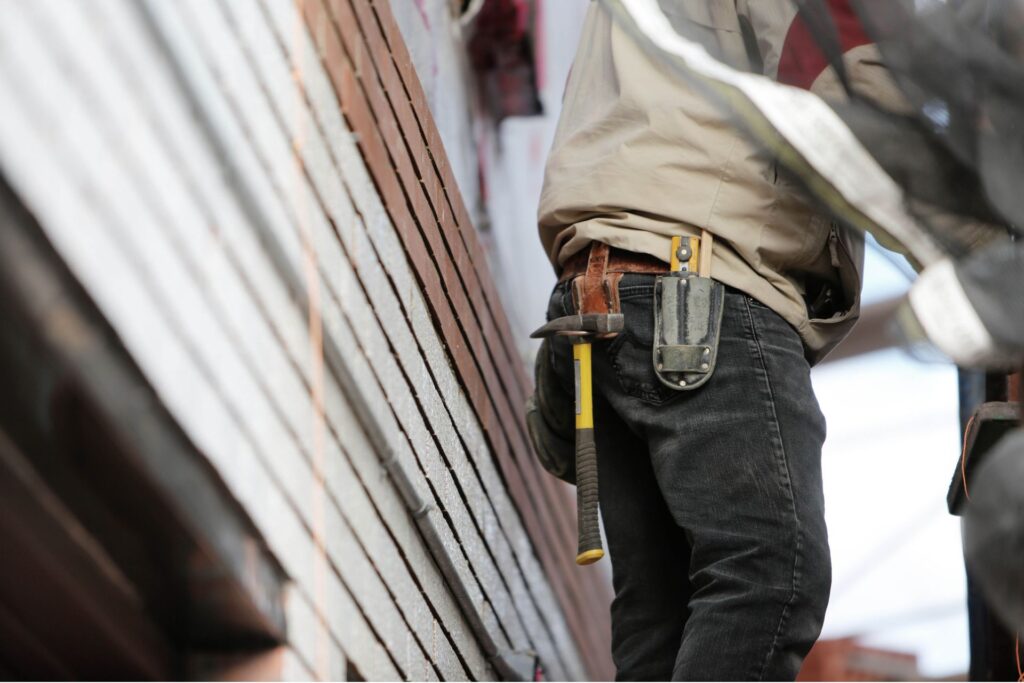
Managing Costs During The Building Process
When it comes to building a new home or taking on a major renovation, managing costs is one of the most critical aspects to ensure your project stays within budget. Even the smallest expenses can add up quickly, so it’s essential to have a system in place to keep track of costs in real-time. Below are some practical strategies to help you stay on top of your spending and avoid those dreaded budget blowouts.
How to Keep Track of Expenses in Real-Time
Keeping an eye on expenses as they occur is vital. One effective way to do this is by setting up a dedicated budget for your project that tracks all incoming invoices, payments, and unexpected costs. You can use a simple spreadsheet to log every transaction manually, but this can be time-consuming and prone to human error.
A more efficient approach is to use a digital tool or app designed for construction project management. These tools often come with features that allow you to track expenses in real-time, categorize them by project phase, and provide a clear overview of your budget at any given moment. By staying on top of costs daily, you can make informed decisions quickly, avoiding any unpleasant surprises down the road.
The Use of Software or Apps to Monitor Costs
Today, there are numerous software options available that can simplify the process of managing your building expenses. Tools like Buildertrend, CoConstruct, or even general project management apps like Trello or Asana can help you monitor costs, schedule payments, and keep all financial documents in one place. Many of these platforms also offer mobile apps, so you can check your budget and expenses on the go.
These tools often provide dashboards that show you real-time data on your spending versus your budget, giving you a clear picture of where your money is going. They can also alert you to potential overspending, so you can address issues before they become significant problems. The key is to choose a tool that integrates well with your builder’s systems and is easy for you to use regularly.
Tips on Maintaining Communication with Your Builder to Avoid Unexpected Cost Overruns
Open and continuous communication with your builder is essential to keeping your project on budget. Regular meetings or updates are crucial to ensure everyone is on the same page. Be proactive in discussing any changes or adjustments to the plan that could impact costs. By staying involved and asking questions, you can avoid misunderstandings that might lead to unexpected expenses.
Additionally, make sure to get any agreements in writing, especially when it comes to changes or additional work. Verbal agreements can easily be forgotten or misinterpreted, leading to disputes and cost overruns. Having clear, documented communication can save you from headaches later in the project.
In conclusion, managing costs during the building process is all about vigilance, using the right tools, and maintaining strong communication. By tracking expenses in real-time, utilizing cost-monitoring software, and staying in close contact with your builder, you can keep your project on track financially and avoid those surprise expenses that can derail your budget.

Case Studies
In the world of construction, charge-up rates can offer a flexible and transparent approach to managing project costs. By applying this method, clients have better control over their budgets while ensuring the project’s quality and timeline are maintained. Below are two case studies from different regions in New Zealand, illustrating how charge-up rates were effectively implemented and managed.
Case Study 1: Residential Renovation in North Island
A homeowner in Auckland, North Island, decided to renovate their 1960s bungalow. The project involved updating the kitchen, bathroom, and living spaces to create a modern, open-plan layout. Given the unpredictable nature of renovations—where unexpected issues often arise—using a fixed-price contract could have led to either budget overruns or compromises on quality. Instead, the homeowner and the builder agreed to a charge-up rate, which provided transparency in pricing and flexibility in decision-making.
Throughout the project, the builder provided detailed weekly invoices, including a breakdown of labor, materials, and subcontractor costs. This approach allowed the homeowner to track expenses in real-time and make informed decisions when unexpected issues, like outdated wiring, were uncovered. The charge-up rate also enabled the homeowner to prioritize spending on high-quality finishes while staying within budget. By the end of the project, the renovation was completed on time, and the homeowner was pleased with both the quality and the cost control achieved through the charge-up method.
Case Study 2: Commercial Office Fit-Out in South Island
A growing tech company in Christchurch, South Island, needed to fit out a new office space to accommodate its expanding team. The project involved a full interior build, including partitions, electrical work, and custom installations to reflect the company’s brand. Given the tight deadline and the complexity of the design, the company opted for a charge-up rate contract to ensure the project could adapt to any changes without compromising on quality or time.
The charge-up approach allowed for close collaboration between the client, designer, and builder. Regular meetings and transparent cost reporting kept the project on track. When a change in the office layout was requested midway through the project, the charge-up contract made it easy to adjust the scope without renegotiating the entire contract. This flexibility proved invaluable, as the final office space not only met the company’s needs but also reflected its brand identity. The project was delivered within the desired timeframe, and the transparent pricing provided peace of mind for the client, knowing they had full control over every dollar spent.
These case studies from both the North and South Islands of New Zealand demonstrate the effectiveness of charge-up rates in managing construction projects. Whether for residential renovations or commercial fit-outs, this approach provides the flexibility, transparency, and control needed to navigate the uncertainties of building and renovation work, ensuring that projects are completed to the highest standard while keeping costs in check.
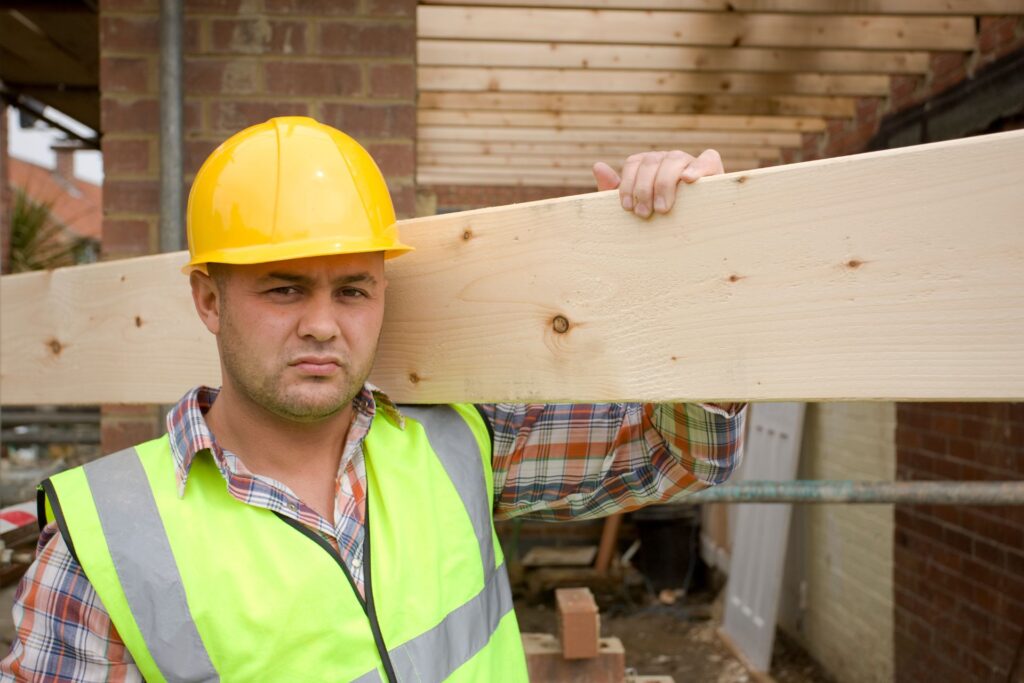
FAQs: About Builder Charge Up Rates NZ
Conclusion
In conclusion, understanding the key factors that influence building costs can empower you to make informed decisions throughout your project. By being aware of charge-up rates, effectively tracking expenses, and maintaining clear communication with your builder, you can better manage your budget and avoid unexpected overruns. Armed with this knowledge, you can approach the process of hiring a builder with greater confidence, ensuring your project stays on track. To make sure you’re fully prepared, consider consulting with professionals or using reliable tools to accurately estimate your costs and keep your build within budget.
Find A Professional Builders Near You!
- Auckland Builders For Small Jobs
- Builders Alexandra
- Builders Ashburton
- Builders Auckland
- Builders Blenheim
- Builders Cambridge
- Builders Central Otago
- Builders Christchurch
- Builders Clyde
- Builders Cromwell
- Builders Dunedin
- Builders Feilding
- Builders Gisborne
- Builders Hamilton
- Builders Hastings
- Builders Havelock North
- Builders Hawkes Bay
- Builders Hibiscus Coast
- Builders Invercargill
- Builders Johnsonville
- Builders Kapiti
- Builders Kerikeri
- Builders Levin
- Builders Lower Hutt
- Builders Manawatu
- Builders Masterton
- Builders Mosgiel
- Builders Napier
- Builders Nelson
- Builders New Plymouth
- Builders Oamaru
- Builders Paihia
- Builders Palmerston North
- Builders Paraparaumu
- Builders Porirua
- Builders Pukekohe
- Builders Queenstown
- Builders Rangiora
- Builders Rolleston
- Builders Taupo
- Builders Tauranga
- Builders Te Awamutu
- Builders Timaru
- Builders Tokoroa
- Builders Upper Hutt
- Builders Waikanae
- Builders Wanaka
- Builders Warkworth
- Builders Wellington
- Builders West Auckland
- Builders Whakatane
- Builders Whanganui
- Builders Whangarei
- Handyman Wellington
- Home Builders Rotorua
- Kitchen Removal Service Auckland
- Wellington Builders For Small Jobs
About the Author:
Mike Veail is a recognized digital marketing expert with over 6 years of experience in helping tradespeople and small businesses thrive online. A former quantity surveyor, Mike combines deep industry knowledge with hands-on expertise in SEO and Google Ads. His marketing strategies are tailored to the specific needs of the trades sector, helping businesses increase visibility and generate more leads through proven, ethical methods.
Mike has successfully partnered with numerous companies, establishing a track record of delivering measurable results. His work has been featured across various platforms that showcase his expertise in lead generation and online marketing for the trades sector.
Learn more about Mike's experience and services at https://theleadguy.online or follow him on social media:




